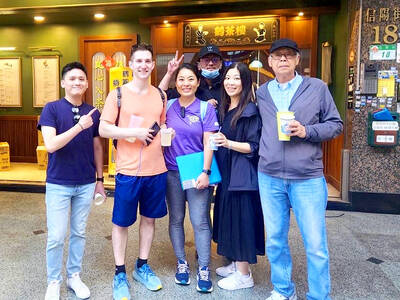◆ Best Newcomer 最佳流行音樂演唱新人獎
Lin Yu-chung (林宇中/林宇中個人首張專輯)
◆ Best Aboriginal Album
最佳原住民語流行音樂演唱專輯獎
Halei-Ludamagan (哈雷-路達瑪幹 原住民創作專輯)
◆ Best Instrumental Album 最佳流行音樂演奏專輯獎
Yi Hu (意湖/山風音樂有限公司)
◆ Best Crossover Album 最佳跨界音樂專輯獎
Lin Yu-chung (林宇中/林宇中個人首張專輯)
◆ Best Newcomer 最佳流行音樂演唱新人獎
Jing Che (驚蟄)
◆ Best Hakka Singer 最佳客語演唱人獎
Liu Shao-hsi (劉劭希/果果台客)
◆ Best Aboriginal Singer 最佳原住民語演唱人獎
Ludamagan (路達瑪幹/哈雷-路達瑪幹 原住民創作專輯)
◆ Best Classical Music Album 最佳古典音樂專輯獎
Yuan ? Luo Wei-dao Chorus Compositions
(源-駱維道合唱作品集)
◆ Best Folk Music Album 最佳民族樂曲專輯獎
Taking Ina's Hands (牽Ina的手)
◆ Best Traditional Operatic Album
最佳戲曲曲藝專輯獎
Wu Dang Suo Zong (吳党所蹤下回分解)
◆ Best Children's Music Album 最佳兒童樂曲專輯獎
Love and Hope, Power of Life
(愛與希望,生命的原動力)
◆ Best Religious Music Album 最佳宗教音樂專輯獎
If Open The Window Gently (如果輕啟這扇窗)
◆ Best Composer 最佳作曲人獎
Lee He-pu
(李和莆/台灣是寶島第一篇:草螟弄雞公《歐陽伶宜
First Taiwanese Cello Quartet》)
◆ Best Lyricist 最佳作詞人獎
Gao Jun-ming
(高俊明/莿帕互火燒《源─駱維道合唱作品集》)
◆ Best Singing Performer 最佳演唱獎
The Formosa Aboriginal Song and Dance Troupe
(原舞者/牽Ina的手)
◆ Best Performer 最佳演奏獎
Ouyang Ling-yi, Chang Pei-jie, Chen Yu-han and
Hsu Shu-hsian (歐陽伶宜,張培節,陳昱翰,許書閑/
歐陽伶宜First Taiwanese Cello Quartet)
◆ Best Song 最佳年度歌曲
Winds from Pacific Ocean from In a Flash
(太平洋的風《匆匆》)
◆ Best Taiwanese-language Album 最佳台語流行
音樂演唱專輯獎
The Fish that Loves Dreaming (愛作夢的魚)
◆ Best Mandarin-language Album 最佳國語流行音
樂演唱專輯獎
The Great Leap Forward 2005 (太平盛世)
◆ Best Hakka Album 佳客語流行音樂演唱專輯獎
Hohak Carnival (好客戲/角頭文化事業股份有限公司)
◆ Best MV Director 最佳音樂錄影帶導演獎
Hsu Jun-ting (徐筠庭/表面的和平《華麗的冒險》)
◆ Best Composer 最佳作曲人獎
Penny Tai (戴佩妮/愛瘋了《愛瘋了》)
◆ Best Lyricist 最佳作詞人獎
Hu De-fu (胡德夫/太平洋的風《匆匆》)
◆ Best Arrangement 最佳編曲人獎
Hung Sheng-wen (洪晟文/暗舞《哈雷媽媽》)
◆ Best Producer 最佳專輯製作人獎
Chung Cheng-hu (鍾成虎/華麗的冒險)
◆ Best Taiwanese Male Singer 最佳台語男演唱人獎
Wu Bai (伍佰/雙面人)
◆ Best Mandarin-language Album 最佳國語流行音
樂演唱專輯獎
The Great Leap Forward 2005 (太平盛世)
◆ Best Mandarin Male Singer 最佳國語男演唱人獎
Wang Lee-hom (王力宏/蓋世英雄)
◆ Best Taiwanese Female Singer
最佳台語女演唱人獎
Huang Yi-ling (黃乙玲/甲你作伴)
◆ Best Band 最佳樂團獎
The Chairman (董事長樂團/找一個新世界)
◆ Best Singing Group 最佳演唱組合獎
Miss Gold Digger (拜金小姐/拜金小姐 2005)
◆ Best Producer 最佳專輯製作人獎 (Traditional and
Art Music Category)
Hung Rui-chen (洪瑞珍/台灣唸歌)

A vaccine to fight dementia? It turns out there may already be one — shots that prevent painful shingles also appear to protect aging brains. A new study found shingles vaccination cut older adults’ risk of developing dementia over the next seven years by 20 percent. The research, published Wednesday in the journal Nature, is part of growing understanding about how many factors influence brain health as we age — and what we can do about it. “It’s a very robust finding,” said lead researcher Pascal Geldsetzer of Stanford University. And “women seem to benefit more,” important as they’re at higher risk of

Eric Finkelstein is a world record junkie. The American’s Guinness World Records include the largest flag mosaic made from table tennis balls, the longest table tennis serve and eating at the most Michelin-starred restaurants in 24 hours in New York. Many would probably share the opinion of Finkelstein’s sister when talking about his records: “You’re a lunatic.” But that’s not stopping him from his next big feat, and this time he is teaming up with his wife, Taiwanese native Jackie Cheng (鄭佳祺): visit and purchase a

Experts say that the devastating earthquake in Myanmar on Friday was likely the strongest to hit the country in decades, with disaster modeling suggesting thousands could be dead. Automatic assessments from the US Geological Survey (USGS) said the shallow 7.7-magnitude quake northwest of the central Myanmar city of Sagaing triggered a red alert for shaking-related fatalities and economic losses. “High casualties and extensive damage are probable and the disaster is likely widespread,” it said, locating the epicentre near the central Myanmar city of Mandalay, home to more than a million people. Myanmar’s ruling junta said on Saturday morning that the number killed had

Mother Nature gives and Mother Nature takes away. When it comes to scenic beauty, Hualien was dealt a winning hand. But one year ago today, a 7.2-magnitude earthquake wrecked the county’s number-one tourist attraction, Taroko Gorge in Taroko National Park. Then, in the second half of last year, two typhoons inflicted further damage and disruption. Not surprisingly, for Hualien’s tourist-focused businesses, the twelve months since the earthquake have been more than dismal. Among those who experienced a precipitous drop in customer count are Sofia Chiu (邱心怡) and Monica Lin (林宸伶), co-founders of Karenko Kitchen, which they describe as a space where they